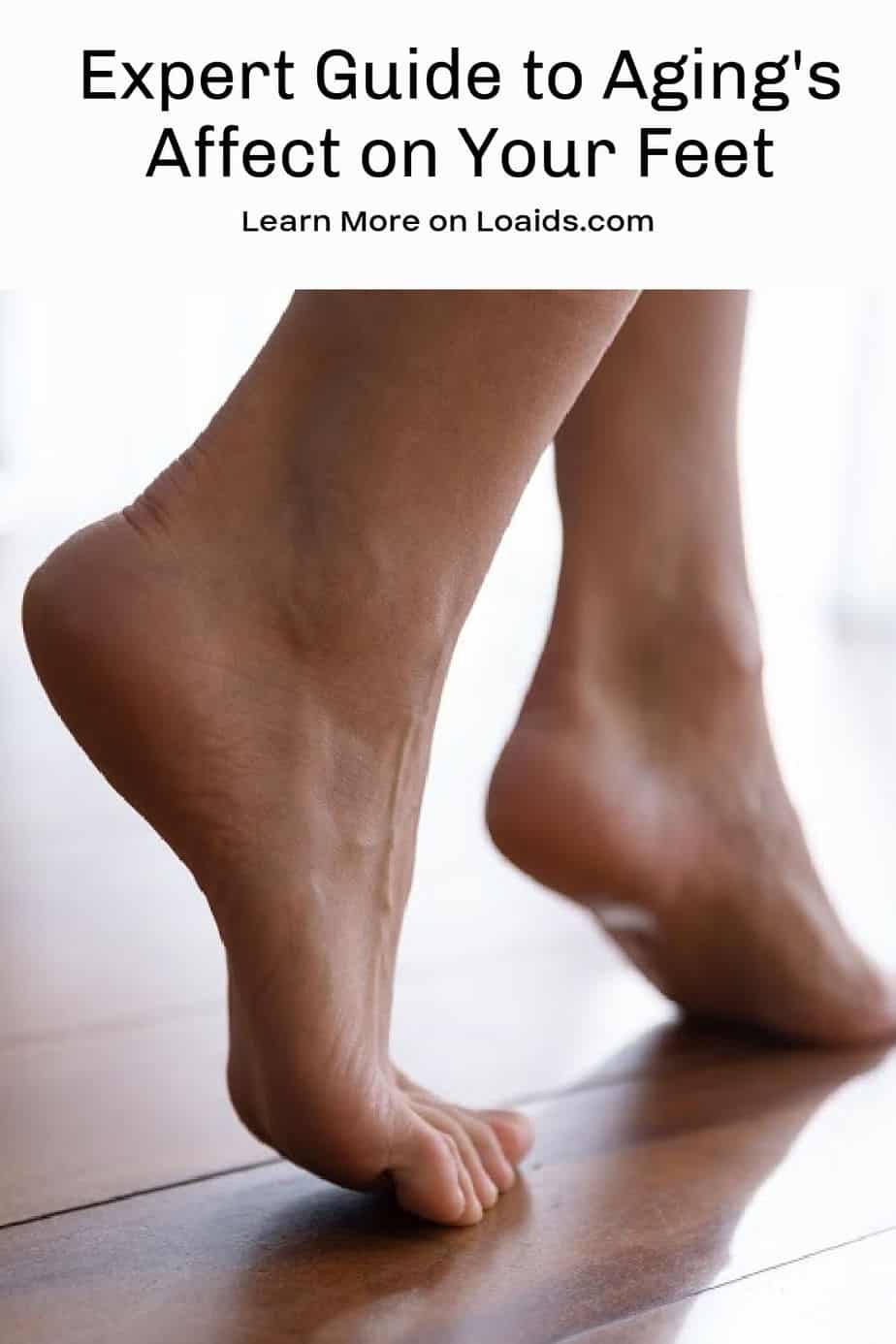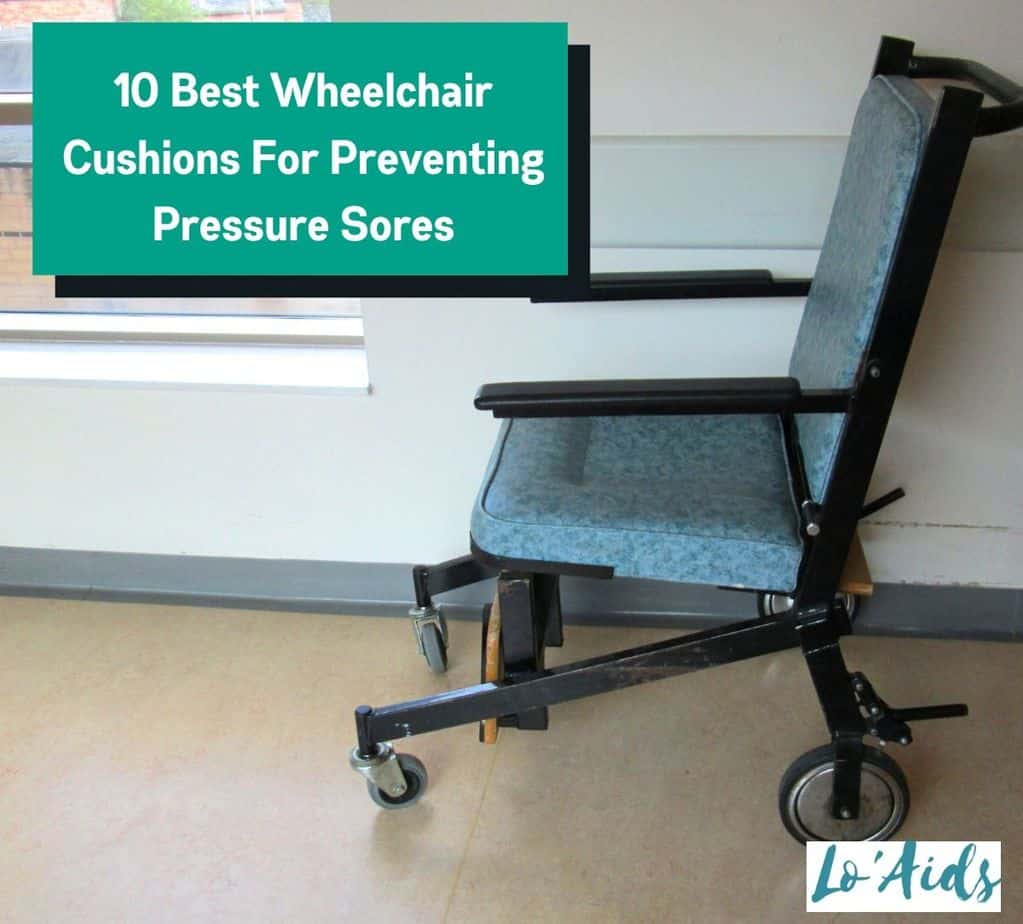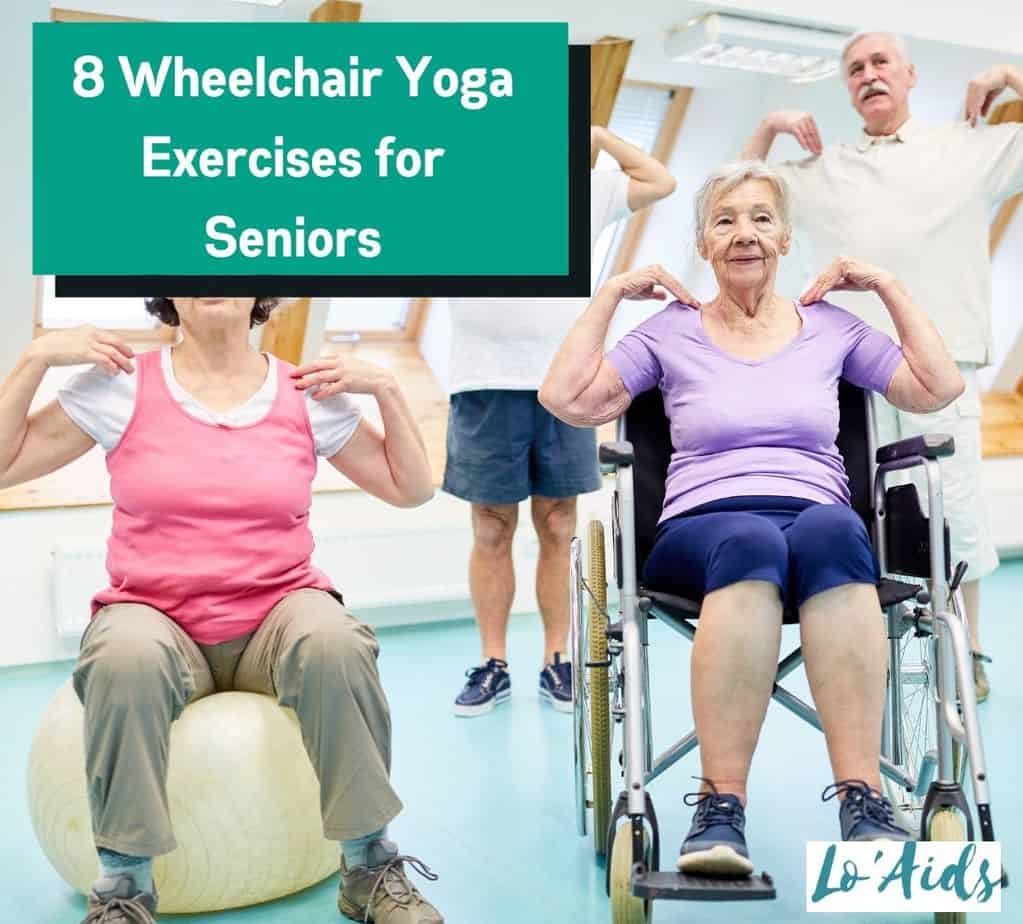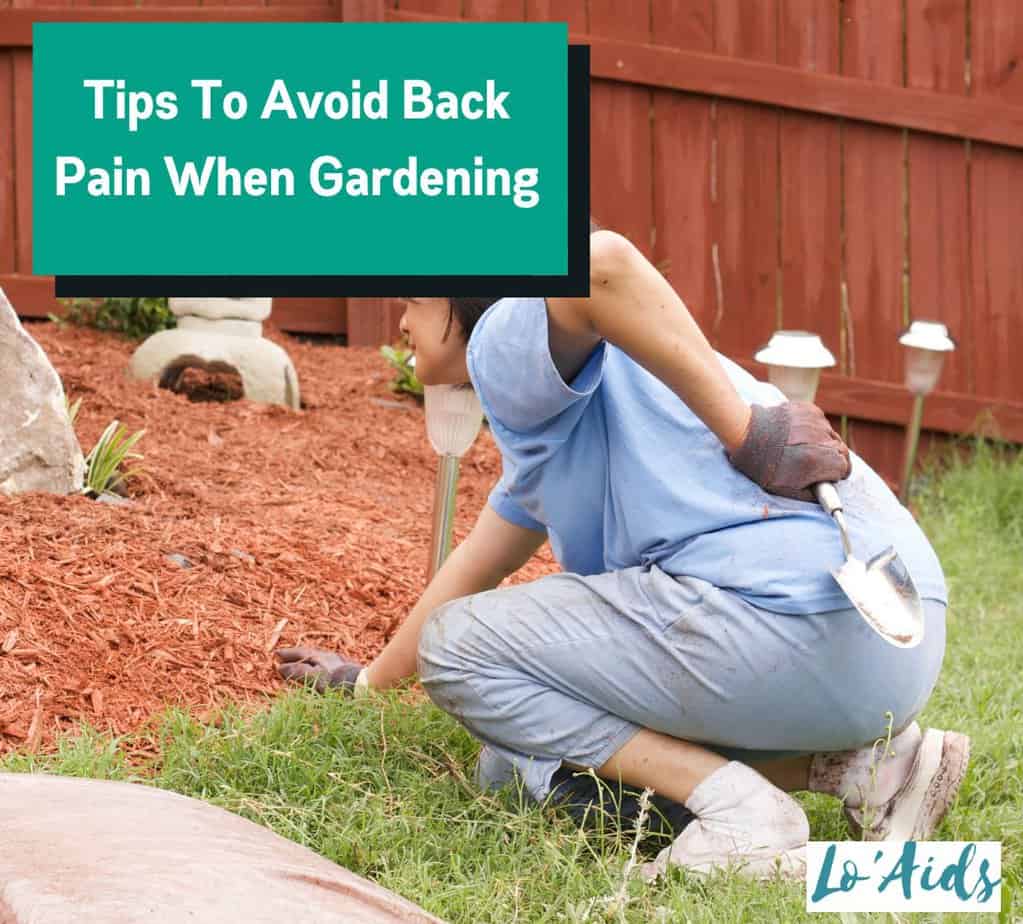Curious to learn about how aging affects your feet over 40 years (or 50, 60, and beyond)?
As you get older, your feet get older as well.
Feet naturally change with age, and the more you know about these changes, the more you can do to prevent problems.
So, keep reading to learn all about aging’s affect on those tootsies!
Table of Contents
How Do Feet Change Over The Years?
Over time, age-related physiological changes occur and affect how your bones, tendons, and joints function. With aging, the body’s ligaments and tendons lose their flexibility and strength.
In feet over 40, this appears to flatten the arch and lengthen the foot and toes. This usually results in a half-size or more increase in shoe size.
Here are the most common changes that often arise as you age;
Fat Pad Reduction
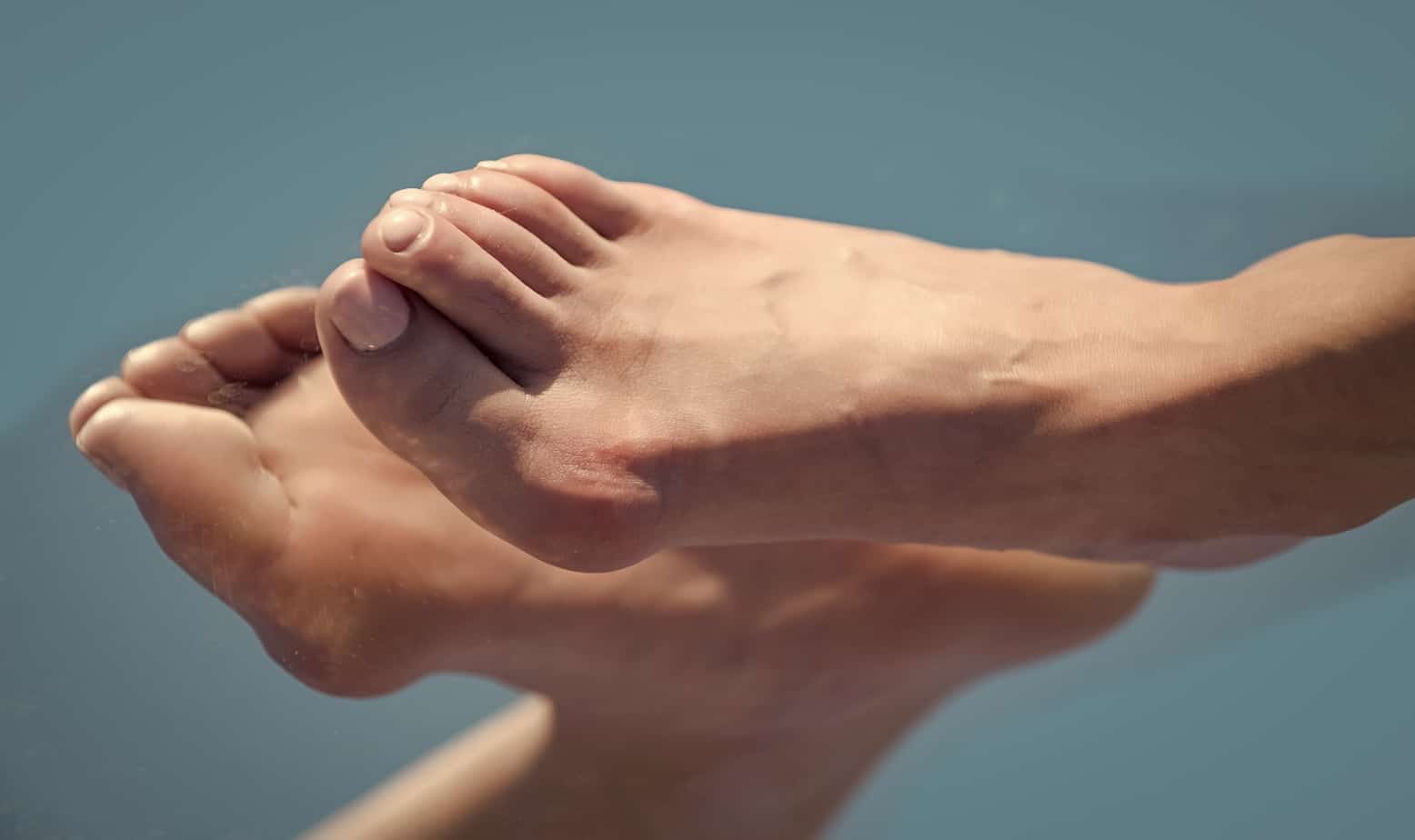
The fat pad in the foot is a thick layer of fat that lines the sole of the foot and cushions the forefoot and heel on contact with hard surfaces.
While getting older, you can lose fat padding in your feet. Additionally, genetics is thought to be a cause behind the excessive loss of fat pad on feet.
This can often lead to pain, burning sensations, and increased keratinization, especially with increased pressure (due to increased body weight) and prolonged standing time.
All these make it challenging to perform your preferred activities.
Shoes with cushions or foam shoe inserts, known as “orthotics,” may help increase comfort. Your foot doctor may also suggest other treatments, like filler injections, to replace the atrophied fat pad.
Dry Skin
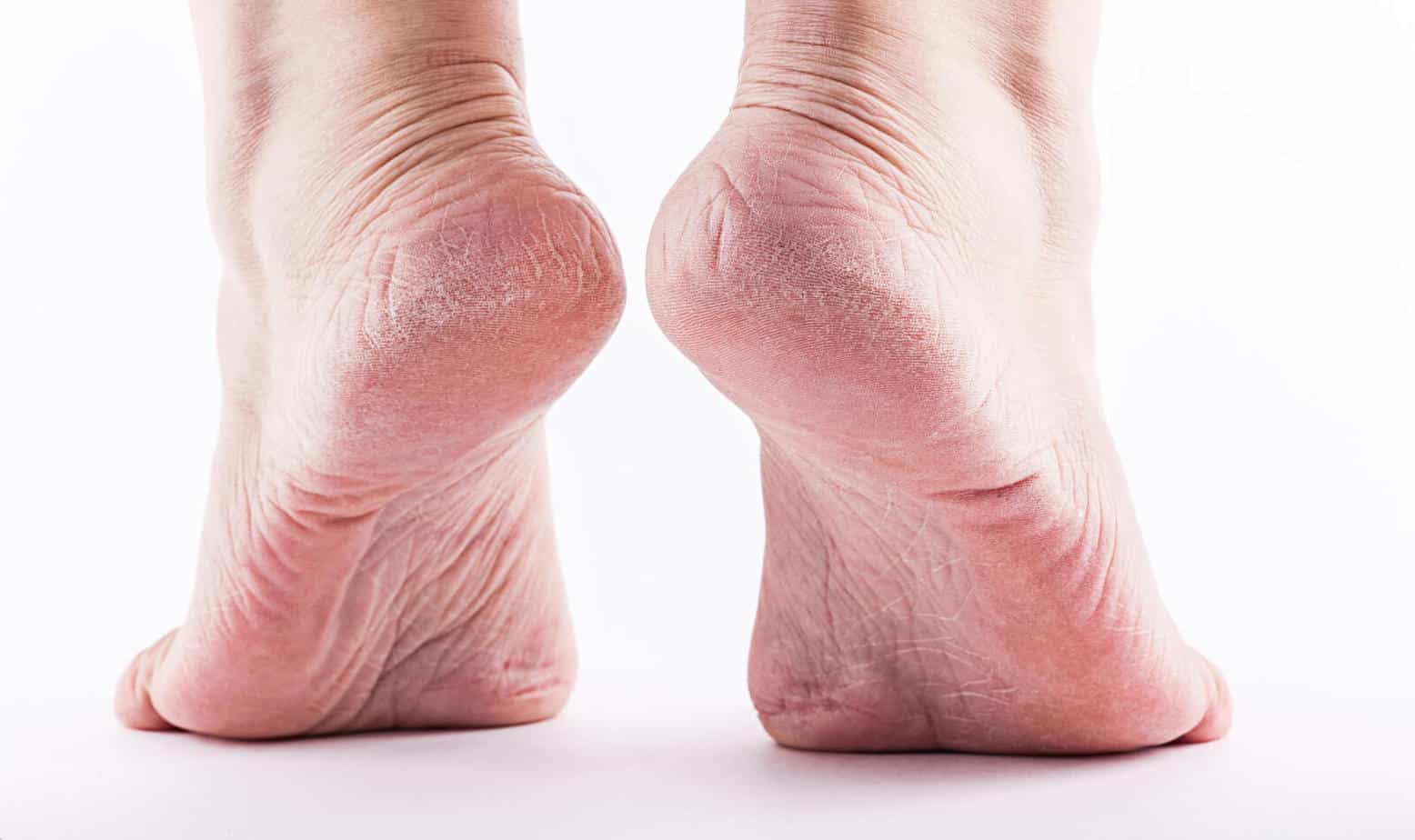
Skin changes are common problems with aging feet, especially in those over 40. These can be changes in texture, dryness, or lesions.
Dry sole is a common problem that results from reduced cushioning on the foot’s sole due to fat loss that occurs as feet age.
When the fat pads on the bottom of the feet diminish with age, this places additional stresses on the skin, which dries out and cracks. This is also the reason why the feet often feel sore at the end of the day.
Cracked heels and calluses can make it painful to walk or even stand. Staying hydrated and using a moisturizing foot cream twice daily may help protect feet from drying out and prevent cracking and infection.
Achilles Tendon Problem
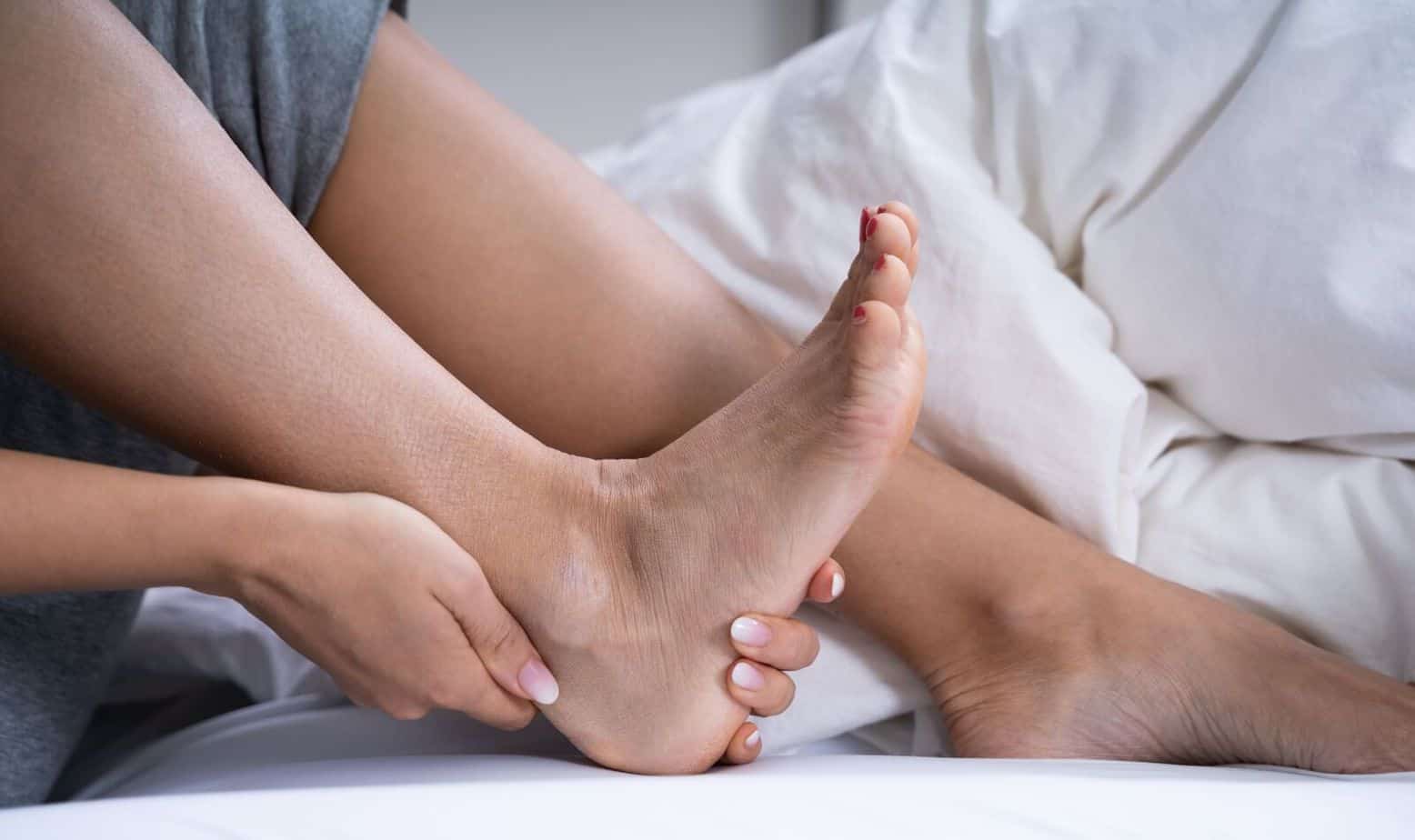
The Achilles tendon flexes the foot when climbing stairs. With age, it gradually weakens and loses elasticity and stability.
This may lead to a reduction in foot arch height and can cause an increase in the length or width of the feet.
Achilles tendon problem makes you more prone to injuries as muscle strains, tendonitis, or Achilles tendon rupture.
Achilles Tendon tear causes pain and swelling at the back of your ankle, inability to flex your ankle, midfoot, and toes, or bend your foot downward when walking.
Rest, ice applications, and medication can help reduce the swelling.
Common Toenail Problems
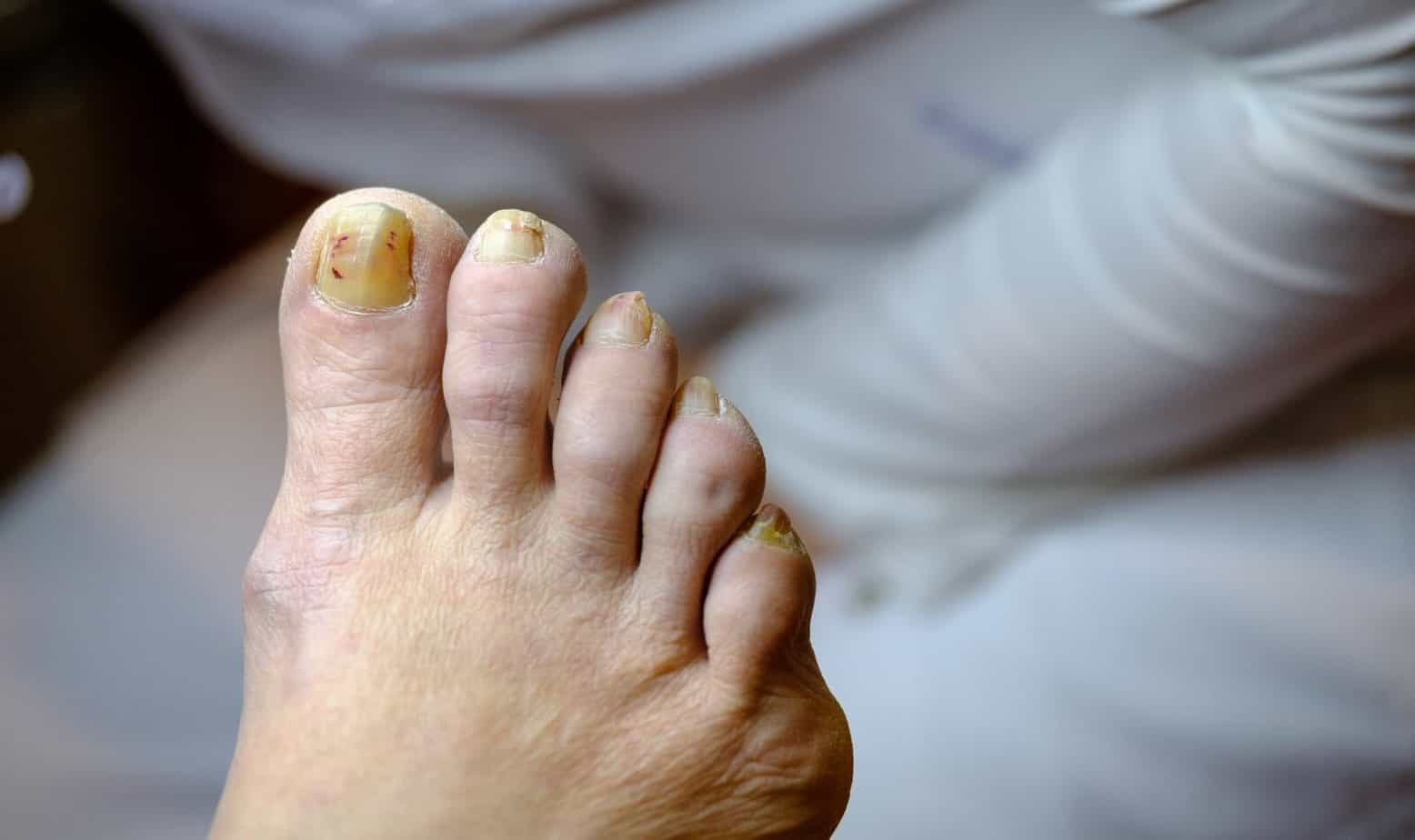
1. Toenails Thickening and Discoloration
As you age, your toenails usually become discolored –– usually yellowed or gray –– misaligned and thicker making them tougher to trim.
The estrogen and testosterone hormones –– that stimulate keratin production and contribute to the smooth toenails –– production decline with aging.
When these hormones decline, toenails discolor, crack, split, form uneven ridges and layers, and grow at a slower rate.
Although proper nail care can significantly improve your toenail’s appearance, it may not be enough to avoid aging-related changes entirely.
2. Ingrowing Toenail
Ingrowing toenail happens when the corner or edge of your toenail –– usually the big toe –– curves and grows into the surrounding skin.
This condition is very common in the old feet of both men and women and may cause redness, pain, and swelling. The toe may get infected. In severe cases, your foot doctor may have to remove the nail root.
Being overweight, diabetic, and sweaty feet all increase your chances for an ingrown toenail. Avoid cutting your toenails too short or wearing tight shoes to prevent ingrown ones.
Everything from tight shoes to poor circulation can affect how the nails curve. With some shape changes, it’s possible to increase ingrown toenails.
Diabetic Feet Problems

Diabetes can cause nerve damage, causing your feet to tingle, feel numb, or have a pins-and-needles sensation; hence you may not feel minor cuts or wounds in your feet.
Your. Foot ulcers can start as small as a blister but then get more extensive and infected. In people with diabetes, these are major causes of amputations.
Keep your blood sugar controlled, check your feet often, and see a doctor right away if you notice anything odd.
Other Problems (Circulatory)
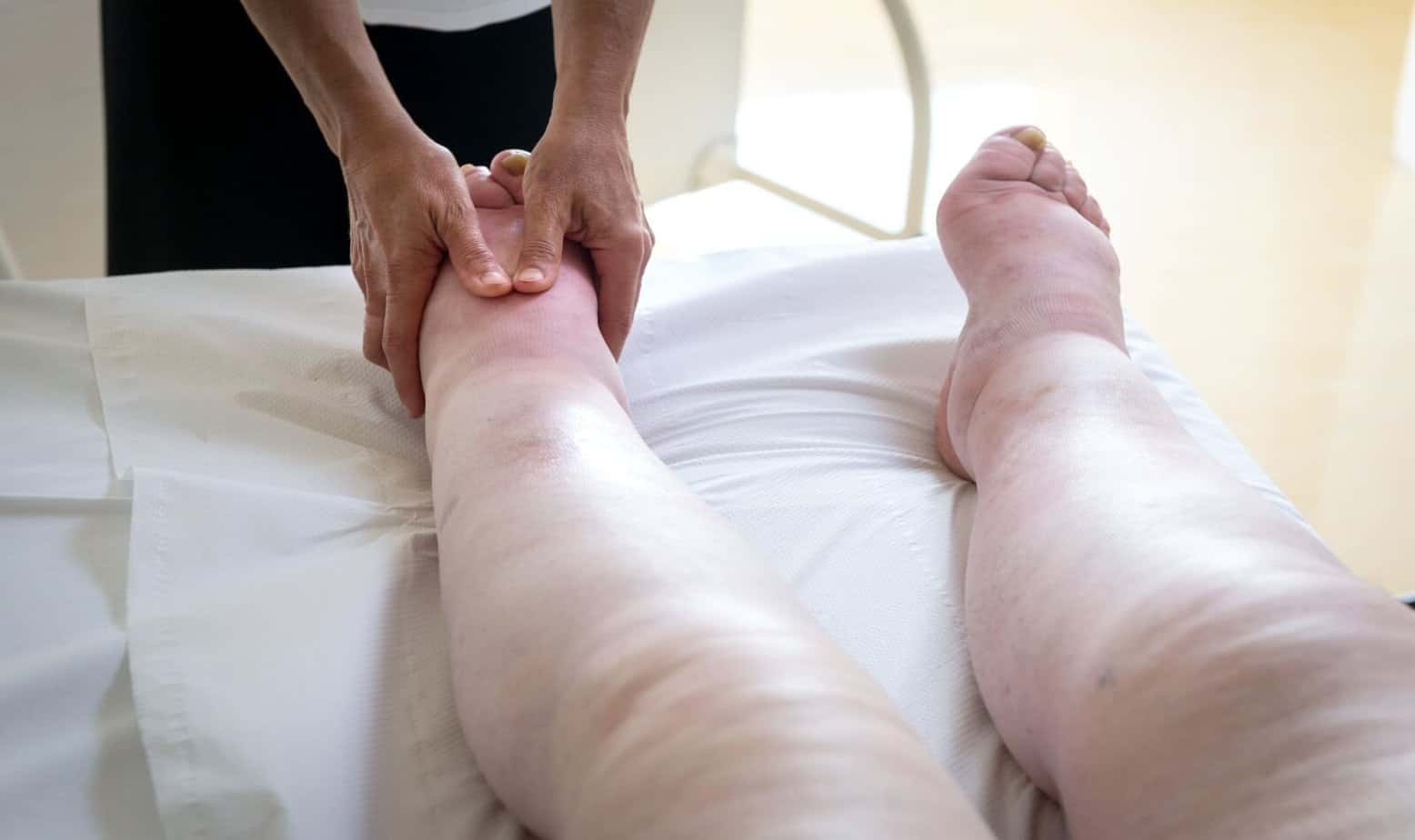
Swelling “edema” is one of the most common foot problems in the elderly. Edema is usually caused by poor circulation, leading to fluid buildup in the feet and ankles.
Vein disease, diabetes, and other conditions more common with age can affect your blood circulation and slow the blood flow to your feet. That makes any cut, wound, or new-shoe blister slower to heal.
If you have any circulatory disorder, inspect your feet regularly for cuts, and seek treatment for them promptly.
How To Take Care Of Your Feet After Your 40s (20 Tips)
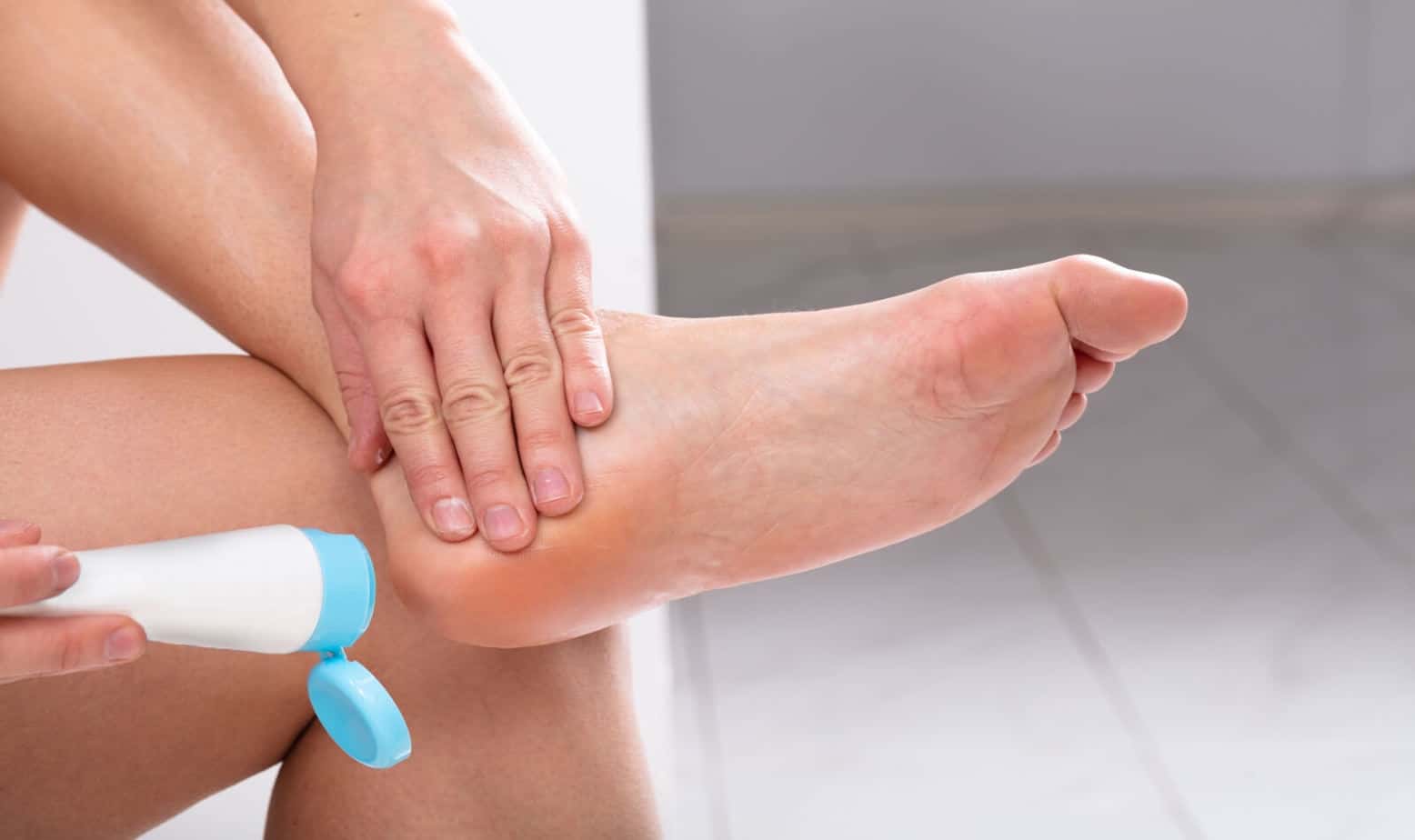
Remember that a “healthy body starts with healthy feet.” An average person will walk the equivalent of twice around the world in a lifetime, which is a long time on your feet.
Taking care of your feet doesn’t need an expensive spa treatment. You can keep your feet healthy feet avoid complications by spending just a few minutes daily on foot care and wearing the right shoes.
Here Are Some Tips to Keep Your Feet Healthy:
- Check your feet regularly, paying attention to changes in appearance, color, or texture.
- Maintain good elderly personal hygiene care, including washing your feet, especially between your toes! Wash with a washcloth carefully and regularly.
- Make sure to dry your feet thoroughly after washing, including between the toes. This wash-and-dry system lessens problems such as odor, fungus, and bacteria.
- If you like to soak your feet, don’t use Epsom salts — they’re too drying and don’t offer medical benefits. Instead, you can use warm water and a little liquid soap containing skin softeners.
- Moisturize your feet after washing. You may need to moisturize your feet several times a day, especially during dry-skin winter months
- No fancy products are required; basic lotions and creams are fine.
- Alternate your shoes each day. Since your feet have sweat glands, your shoes will absorb moisture from your feet, so it is important to allow you crucial air out to avoid triggering foot odor or infections.
- Also, change socks or stockings more than once a day.
- If you have a smelly feet problem, soak your feet in a mixture of vinegar and water.
- Choose shoe size correctly. You may not wear the same shoe size in shoes fabricated by different manufacturers.
- Always buy new shoes late in the day, when feet tend to be at their largest, and choose shoes that feel most comfortable.
- Avoid wearing tight shoes. If you wear high heels, choose wide, stable heels and no higher than two inches. To protect your Achilles tendon from shortening, regularly alternate heel heights.
- To keep your feet strong and healthy, minimize the amount of time you wear shoes that don’t provide arch support, such as flip-flops and flats. (Women especially are more prone to developing flat feet)
- Be cautious when having a pedicure in a salon, as tubs’ cleanliness and instruments are vital. If you have diabetes, talk with your foot doctor before having a pedicure.
- Never cut your toenails into the corners — this could cause an ingrown toenail. Instead, cut your toenails straight across.
- Gently file away any sharp corners or rough edges with an emery board.
- Avoid walking barefoot to help protect your feet from injury and infection.
- Don’t ignore foot pain. Any symptoms that increase or do not resolve within a reasonable time need to be evaluated by your foot doctor.
- Be sure to wear suitable athletic shoes when exercising.
- Apply sunblock on your feet while wearing sandals during the day to avoid sunburn.
Conclusion
The older you get older, the more you need to pay attention to your feet and joints to avoid serious problems.
Foot pain is never normal. If you have foot pain or any problem affecting your regular daily routine, don’t ignore it; see a foot specialist so you can have the condition diagnosed and treated.
Pay attention to your overall health. Check your feet for wounds, excessive swelling, or numbness. Any of these can be a symptom of a condition that requires medical treatment.
Lose excess weight to reduce any added stress to your feet. Keep your feet clean and dry. Always wear comfortable shoes, especially when walking long distances.
Consider using orthotics. Orthotics or shoe inserts can support arches and padding of the feet.
These are especially helpful when standing for long periods or participating in activities that put extra pressure on the feet and increase comfort.
